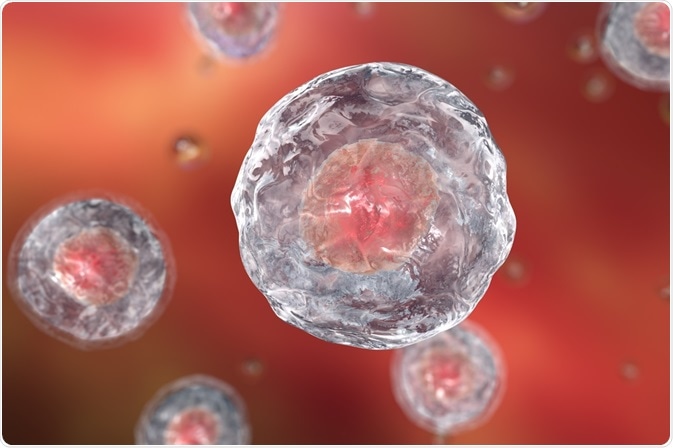Single-nucleus RNA sequencing, also known as sNuc-seq, is a recently developed method of profiling gene expression in cells that are hard to isolate, or tissue that has been archived using isolated nuclei. The method is relatively low cost but generates high throughput data, allowing users to profile several thousand nuclei.
 Kateryna Kon | Shutterstock
Kateryna Kon | Shutterstock
Nuclei isolation techniques
One significant benefit of sNuc-seq is that it does not utilize stressful cell disassociation methods. Generally, sNuc-seq usually involves tissue disruption and cell lysis, carried out in cold conditions, followed by centrifugation and separating the nuclei from debris. However, there are several methods that can be used to release the nuclei from the cells prior to isolation and sequencing.
The spinal cord contains neurons particularly vulnerable to cell death, and which therefore require more delicate methods of releasing the nuclei from the cell. Detergent-mechanical cell lysis involves using a pestle, a homogenizer, and a detergent lysis buffer to lyse cells. This method has the advantage of enabling full tissue disruption and thus generates a higher final yield of nuclei.
Another method, called hypotonic-mechanical cell lysis, involves using hypotonic lysis buffer and pipettes to gradually lyse cells. While both methods successfully yield comparable levels of RNA and numbers of genes per nucleus, hypotonic-mechanical lysis has the added benefit of a controllable level of tissue disruption. This provides scope to choose a balance between the quantity and purity of the final nuclear yield.
sNuc-seq protocols
Once the nuclei have been isolated using one of the available techniques, the nuclei are homogenized and counted. Following this, the samples can be analyzed using sNuc-sequencing platforms. In general, there are two main platforms for massively parallel sNuc-seq: the academic platform and the commercial platform.
One commonly used method of sNuc-seq from the academic platform is the Drop-seq procedure. In it, droplets are generated by using a microfluidic device. The droplets contain a single cell along with a uniquely identifiable bead.
Droplet generation is followed by breakage of the droplet to reduce hybridization events, washing and resuspending, and lastly treatment with exonuclease to eliminate unextended primers. The beads are separated and the connected RNA is amplified by PCR. Complimentary DNA is quantified and amplified at only the 3’ end, followed by next generation sequencing.
Drop-seq can be used for single cell RNA sequencing and requires the input to be specialized for sNuc-seq, such as the popular DroNc-seq method developed in 2017. In this method, droplets are used to encapsulate single nuclei instead of cells.
The DroNc-seq method specifies appropriate concentrations for bead and cell loading to avoid having more than one nucleus per droplet. Modifications to the DroNc-seq method can be made in the event of performing sNuc-seq on more difficult samples, such as spinal cord neurons.
Commercial platforms are supplied with instructions from the manufacturer. Like academic platforms, certain single cell methods can be used with modifications to generate sNuc-seq data. For example, commercial methods utilizing PCR to amplify cDNA may require additional PCR cycles to compensate for the lower cDNA yield from nuclei in comparison to cells.
Applications of sNuc-seq
The key advantage of sNuc-seq as a method is that it can be applied to previously limited cells that were difficult to isolate or tissue that was archived. sNuc-seq can, by analyzing these cell types, be used to discover more about disease, immunity, neurobiology, and plant biology.
In neurobiology, sNuc-seq has been successfully used to distinguish between cell types and neuronal and non-neuronal subtype composition. Furthermore, it has been used to detect and quantify neuronal activity in mammalian brains at high temporal resolution.
Results from such studies indicate that differences in the transcriptome between related subtypes are caused by transcriptional programs that are dependent on the neuronal activity, rather than by differences in developmental origin or anatomical distribution. However, because sNuc-seq dissociates nuclei in tissues, information about the cell’s original anatomical location is lost.
Further Reading
Last Updated: Apr 5, 2019